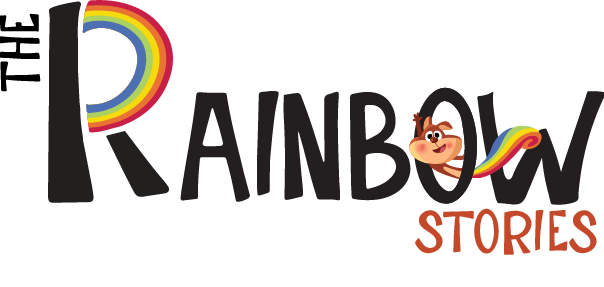Children’s publishing—where visuals carry the story and ignite young imaginations. To stand out, your portfolio must showcase lighthearted children’s book illustration enriched with emotive visual
A strong book illustrator portfolio is your entrance into the world of storytelling, vivid character design samples, and consistent illustration style consistency. Art directors and agents—such as those at SCBWI—seek work that clearly conveys narrative, versatility across formats, and a personal artistic voice. This guide offers actionable steps and illustrator portfolio tips to build a showcase that not only impresses but gets you noticed and hired.
Define Your Target in Children’s Book Illustration
Every standout book illustrator portfolio starts by defining your niche—whether picture books, educational titles, or chapter books. Research visual trends in age-appropriate children book illustration, focusing on the types of children’s book artwork you want to create. Tailoring your portfolio makes it resonate with ideal hiring managers.
If you’re just beginning your journey, learn how to become a book illustrator so you can identify where your style fits within the industry.
Tell a Story Through Your Work
Editors and publishers look for illustrated spreads that convey emotion and narrative. Include visual storytelling pieces—character adventures, scene changes, and standalone moments with clear storytelling intent. Strong narrative-rich samples elevate your book illustrator portfolio above static character sketches.
Include Character Design Samples & Worldbuilding
Showcase diverse character design samples—different ages, species, cultures, and personalities. Mix humans, animals, hybrids, and families. Include environment art to illustrate how characters inhabit their world, showcasing your ability to build immersive children’s book artwork settings.
To strengthen this area, review the essential skills for book illustrators and evaluate which ones are reflected in your current work.
Feature Format Versatility
A dynamic book illustrator portfolio includes examples of full spreads, half pages, spot art, and thumbnail sequences. If pursuing middle-grade, add grayscale line art. This variety reveals your portfolio presentation techniques and ability to adapt to different page formats and storytelling demands.
Highlight Your Creative Process
Share rough sketches, thumbnails, and character turnarounds to demonstrate your workflow. This transparent peek into your illustration style consistency and development is appreciated by art directors and publishers who want to understand your process.
Present Bold & Cohesive Visual Storytelling
Consider your portfolio’s progression like a picture book with a beginning, middle, and end. Include dynamic compositions—worm’s-eye, bird’s-eye, emotive spacing—and full story arcs in a few sequences. Build tension, remove stereotypes, and convey mood transitions in your art.
Curation & Regular Refreshes
Compelling illustrator portfolio tips include showing passion projects. Drop pieces that don’t excite you or reflect your desired direction. Regularly update with fresh work to keep your book illustrator portfolio current.
Explore how The Rainbow Stories showcases visually rich, character-driven narratives—an ideal example of emotional and imaginative storytelling.
Polish Your Presentation Techniques
Minimalist platforms—like clean websites or printable PDFs—focus on your art. Include title pages, opening spreads, a short bio, contact details, and process samples. Add short captions to contextualize narrative works and ensure easy navigation using thoughtful portfolio presentation techniques.
If you’re ready to hire a book illustrator or need guidance customizing your next project, working with professionals can help bring your story to life.
Get Real Feedback & Iterate
Seek critiques from fellow illustrators, SCBWI mentors, art directors, or online communities. Outside perspectives help identify inconsistencies in illustration style consistency, visual narrative strengths, or underrepresented character diversity. Implement feedback and evolve your portfolio accordingly.
Targeted Submission Strategy
Customize your book illustrator portfolio when applying to agents or publishers. Include pieces that align with the publisher’s existing catalog or project themes. Avoid sending everything—curate for relevance, not bulk submissions.
Showcase a Memorable Personal Voice
Stand out by infusing personal interests and cultural influences into your children book illustration samples. Illustrators like Leanne Hatch and Ani Bushy encourage leveraging your unique voice and passion to differentiate your art from industry trends.
Apply Artistic & Portfolio Best Practices
- Include both children’s book artwork in color and black & white.
- Use dynamic compositions and emotional facial expressions.
- Demonstrate character design samples with recurring characters.
- Show depth through layering, texture, and lighting.
Conclusion
To build a book illustrator portfolio that gets you hired, you must combine compelling visual storytelling, disciplined curation, and smart presentation. Showcase your best children’s book illustration samples—particularly character and narrative-focused work—and structure your portfolio with clarity. Emphasize style consistency while demonstrating versatility across formats.
By actively seeking feedback, refreshing your selection, and tailoring your pitch, your children’s book illustrator portfolio will stand out in a crowded market. With dedication, strategic portfolio practices, and a unique voice, you’ll pave your way to being discovered and hired in children’s publishing.

